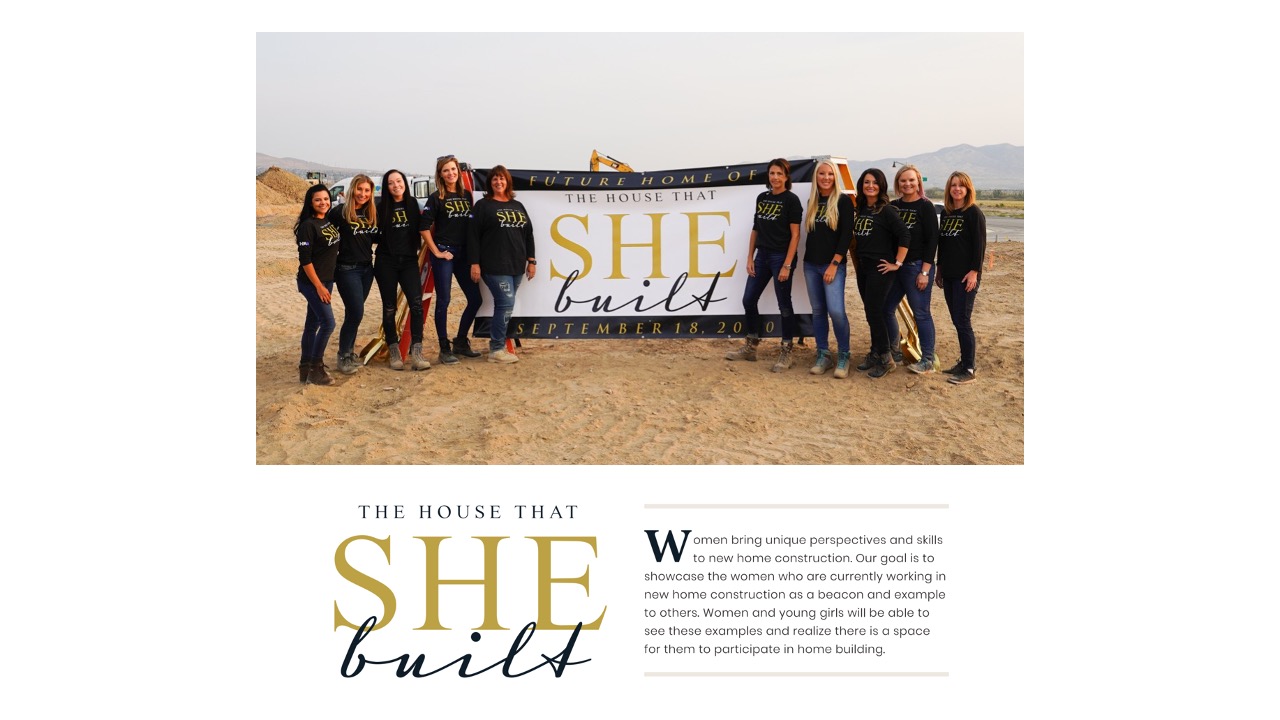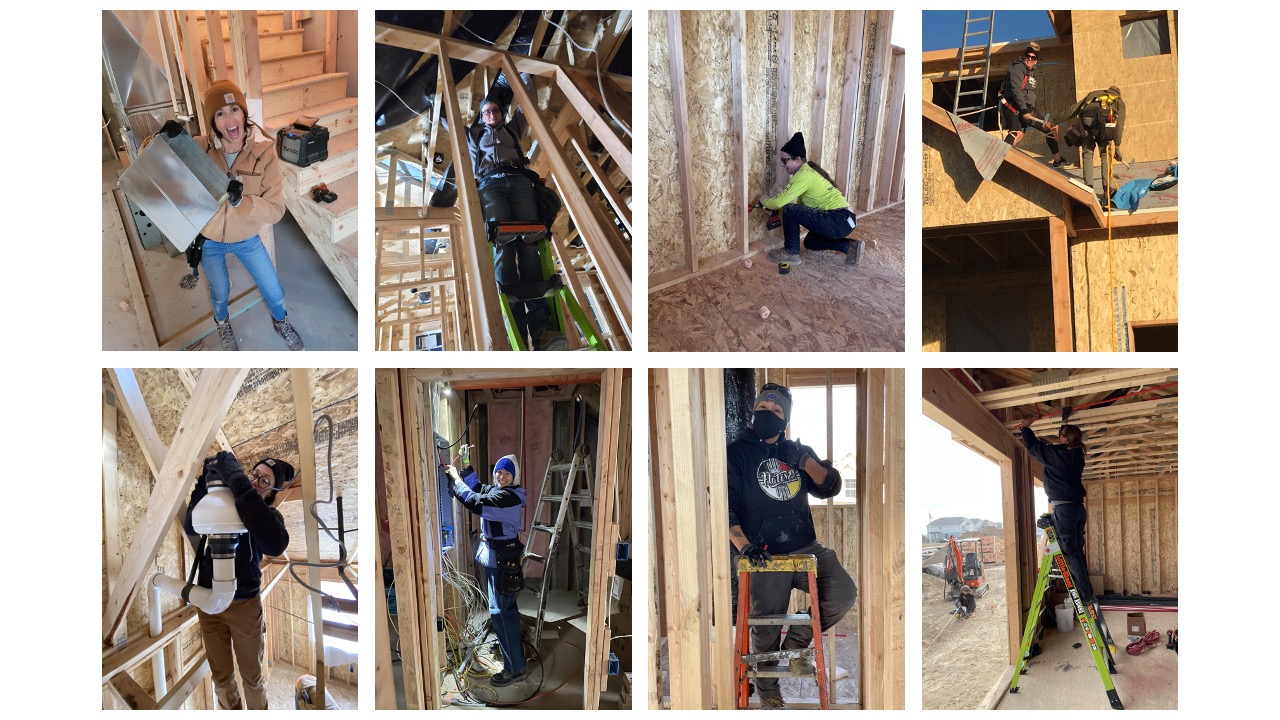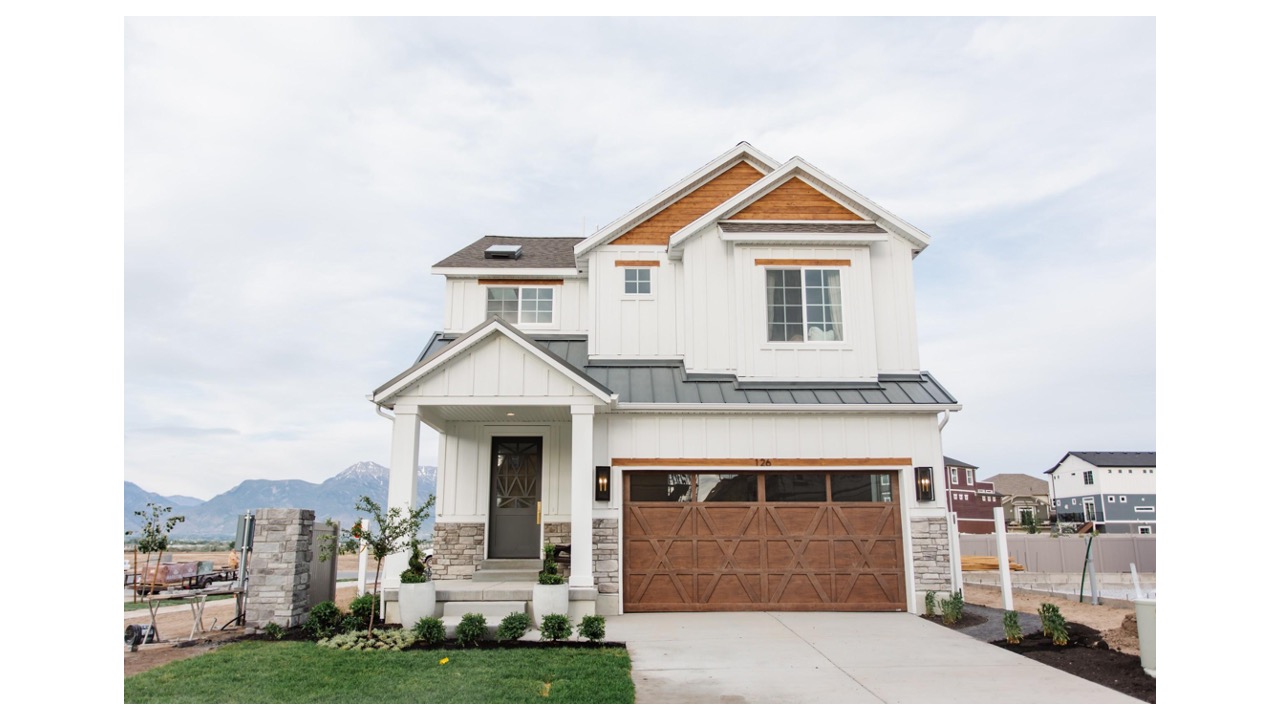
Jennie Tanner, President of the Utah Professional Women in Building, discusses The House the She Built a the EEBA Summit in September 2021 in Denver, CO. The all-women-built home demonstration project highlighted the many opportunities available to women in the home building industry. Proceeds of the home are going towards tradeswomen scholarships and grants. To hear the entire 45-minute presentation, click here. To learn more about The House That She Built, click here.
My name is Jenny Tanner, and I am the owner of Tanner Glass and Hardware. We're subcontractors in Utah supplying and installing several brands of door hardware, bath hardware, mirrors, and shower doors. We've been in business for 21 years and have two locations in Midvale, Utah, and Park City. I was a flight attendant, and I lived in Atlanta for ten years but moved back to Utah in 1995 and started working for my father's construction business.
It seems very common for young men to follow in their father's business, but not so much for women. Until recently, I've known very few women working in the construction industry as a profession. My dad started his business in the early 1970s with a partner, selling doorknobs. I purchased the company from my dad in 2012.
When you're a little girl, parents don't often think about saying, “Hey, why don't you get a job in construction? Have you thought about being a plumber or an electrician?” Even school counselors don't discuss these options with girls. And so, three years ago, I joined the Utah-based charter of the National Association of Homebuilders and came up with an idea to build the first all-women-built home in the nation.
The goal of the home was to highlight and utilize women professionals, skilled trades, and women-owned companies for all aspects of the house to show others that this can and should be done as an everyday event rather than a special event. We wrote a business plan, started looking for land, and created committees to take on different project roles. We had someone in charge of material donations, I was responsible for finding the labor, and we had designers working on the project. Christy Allen was our lead contractor. We broke ground last September 18, 2020, and we were done in May 2021, just in time to be in the Utah Valley Parade of Homes.

My goal was to have all of the work be a volunteer to have more money for all scholarships and grants. To do this, we had to pull women in from all over the country because there are not enough women to complete a project like this in one single market. I struggled to find even the most prominent and most straightforward trades and started to get frustrated, thinking, ‘wow, is this ever going to happen?’
I called the local electrician and plumbers unions, telling my story to the gentlemen in charge, and they thought it was the coolest thing. They’d say, “yeah, yeah, we're going to get these women involved. We think it's great,” and I would never hear back from anyone. So, we decided to get some social media pages going and created a page on Instagram, Facebook, and LinkedIn called The House That She Built. We started following #TradeswomenofInstagram, and that connected us with many women from out of state. We brought women in from Maine, Georgia, Washington, and Oregon. I flew women in and paid for their flights with my American Express points. We put them up in hotels, paid for their meals, took them out, and had social activities with them. We wanted them to bond and get to know us, and understand what this project was all about. Even then, there were times when we knew that we would be faced with not being able to find women that worked in a particular trade, so, if we weren’t unable to find a woman that was a skilled trade, we hired a woman-owned business and worked side by side with the men.

When it was time to choose the land, we kept getting shut down, and I started taking it personally. I don't think that many of the builders felt that we could get it off the ground, or if we did, we would need their help completing it. The one builder that did help us was Oakwood Homes. They were very excited about this project and didn't hesitate to say yes, right off the bat. We chose one of the lots in Saratoga Springs, and although there was a requirement that the house needed to look like the ones in the community, we could make it our own.
The house is 3200 square feet, including the finished basement. It was based on their original plan, centered on functionality for a family. The upstairs has a large workstation designed before the pandemic; the laundry is upstairs. The downstairs has a kid's reading and playroom with a flex room for an office or a gym.
 60% of the proceeds on the home sale will go towards scholarships and grants to help women get that education in any building trade. We also added grants for women who needed babysitters, gas money to school, or tools. 20% of the proceeds will go towards general education and perhaps a future project, and then the other 20% will go toward several domestic charities that we're putting together right now.
60% of the proceeds on the home sale will go towards scholarships and grants to help women get that education in any building trade. We also added grants for women who needed babysitters, gas money to school, or tools. 20% of the proceeds will go towards general education and perhaps a future project, and then the other 20% will go toward several domestic charities that we're putting together right now.
We built this home to educate everybody in the construction industry that there is a place for women to work making a good living, teaching a new generation that there are no longer traditional roles in the workplace, and to help eliminate the shortage of labor in our industry which is an ongoing problem. Construction wages are higher for the skilled trades, but we're not experiencing expansion or getting enough people into the construction workforce. The average wage is paid $32.11, the highest recorded ever, equating to $67,000 a year for a 40-hour workweek. We feel like women can be a part of that solution.
(note: above transcription was lightly edited for increased clarity)